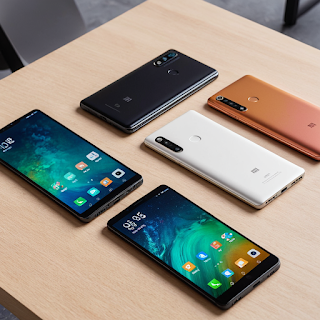In this post, we’ll break down which Xiaomi devices are included in the upcoming update and when you can expect to receive it.
What is HyperOS 2.0?
HyperOS 2.0 is Xiaomi’s fresh take on Android, offering an overhauled user interface and a more streamlined experience across its entire ecosystem of devices. It builds on the foundation laid by MIUI, but with a focus on a more unified, faster, and customizable software environment. Unlike manufacturers like Samsung, which layer their customizations on top of Android, Xiaomi has opted to create its own unique interface, which is why a device might not immediately upgrade to Android 15 but still get the new HyperOS update.
Xiaomi’s CEO, Lei Jun, recently confirmed the schedule for which devices will be updated, and the list is extensive. Let’s take a look at the key devices that are slated to receive HyperOS 2.0, as well as when they’ll be updated.
November 2024: The First Wave of Updates
The following devices will begin receiving the HyperOS 2.0 update starting in November 2024:
Xiaomi Mix Flip
Xiaomi 14 Series (14, 14T, 14T Pro, 14 Ultra)
Xiaomi 13T Pro
Redmi Note 13 Series (Note 13, Note 13 Pro, Note 13 Pro+)
Poco F6 Pro
Poco X6 Series (X6, X6 Pro)
Poco M6 Pro
Xiaomi Pad 6s Pro 12.4
Xiaomi Smart Band 9 Pro
This first batch features a variety of flagship models and mid-range options, including the highly anticipated Xiaomi 14 series and the latest Redmi Note 13 lineup. If you're using any of these devices, November is when you can expect your device to receive the new HyperOS 2.0 interface.
December 2024: The Second Wave of Updates
For those with slightly older but still powerful devices, the December 2024 update brings HyperOS 2.0 to the following models:
Xiaomi 13 Series (13, 13 Ultra, 13 Pro, 13 Lite)
Xiaomi 12 Series (12T, 12T Pro, 12 Pro, 12)
Xiaomi Mi 11 Series (Mi 11 Ultra, Mi 11, Mi 11 Lite 5G NE)
Redmi K50i
Redmi Note 12 Series (Note 12, Note 12 Pro+, Note 12 Pro, Note 12S)
Poco F6,
Poco M6
Poco F5 Series (F5, F5 Pro)
Poco X5 Pro
Little C75,
Little C65
Xiaomi Pad 6
Redmi Pad Pro
Redmi Note 8.7
Redmi Note 7
Little Pad
This second batch includes a mix of earlier Xiaomi flagships like the Xiaomi Mi 11 Ultra and Xiaomi 12, as well as popular devices from the Redmi and Poco brands. Also included in this wave are a couple of tablet models, such as the Xiaomi Pad 6 and Redmi Pad Pro, offering a broader range of devices that will get a fresh look and feel with HyperOS.
What Does This Update Mean for Android?
One key distinction between Xiaomi and other manufacturers is its approach to the relationship between Android and its own custom software. Unlike Samsung or Google, which tend to update both the Android version and their respective UIs at the same time, Xiaomi is updating its custom interface separately from Android itself. As a result, it’s possible that your device could get the HyperOS 2.0 interface without necessarily upgrading to Android 15 right away.
For example, some of the Xiaomi Mi 11 series devices may not see an Android 15 update due to their age, but they'll still get the new HyperOS 2.0, ensuring a refreshed experience without the latest version of Android. This means Xiaomi is able to deliver cutting-edge features and performance improvements even on older devices, which could be a huge plus for users holding onto their older smartphones.
What's New in HyperOS 2.0?
While the exact details of HyperOS 2.0 are still under wraps, Xiaomi has hinted at several key features that are likely to make it a significant upgrade:
Faster, More Efficient Performance: Expect smoother animations, better memory management, and enhanced system stability.
A Refined User Interface: A new visual design with a more consistent and cohesive look across all Xiaomi devices.
Cross-Device Compatibility: Xiaomi’s goal with HyperOS is to unify its ecosystem. Whether you’re using a smartphone, tablet, smartwatch, or smart home device, expect seamless integration.
AI and Smart Features: With the growing influence of AI in mobile software, HyperOS 2.0 could bring new smart features for tasks like battery optimization, AI-driven photography, and more.
Conclusion:
HyperOS 2.0 Is Coming – Are You Ready?
Xiaomi’s ambitious software update schedule for HyperOS 2.0 marks an exciting moment for the brand’s diverse range of devices. Whether you’re rocking the latest Xiaomi 14 Ultra or an older Xiaomi Mi 11, there’s a good chance your device is included in the update rollout. The separate update to HyperOS 2.0 (as opposed to a full Android upgrade) gives Xiaomi the flexibility to update its interface without waiting for Android to catch up, making sure that even older devices continue to receive new features and performance improvements.
If you own one of the devices listed, mark your calendars for the corresponding update in November or December 2024, and stay tuned for more details as Xiaomi begins rolling out these significant updates. We'll be here to give you a closer look at the changes under the hood once the updates hit.
So, which device are you most excited to see get HyperOS 2.0? Let us know in the comments below!

Comments
Post a Comment